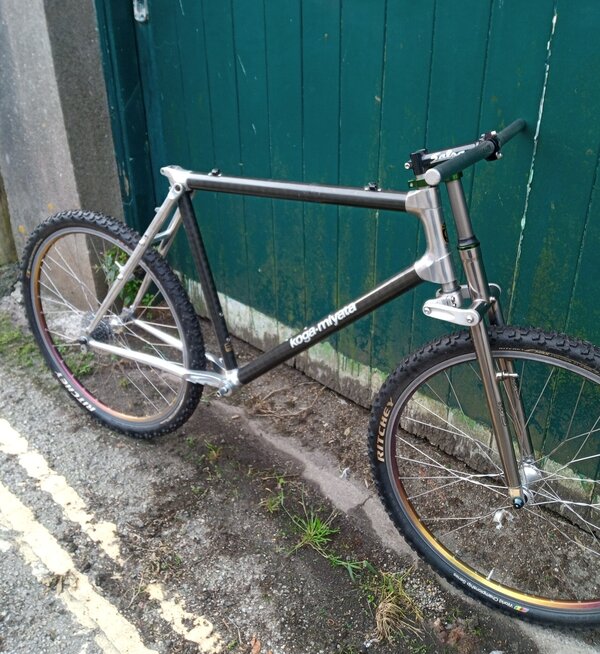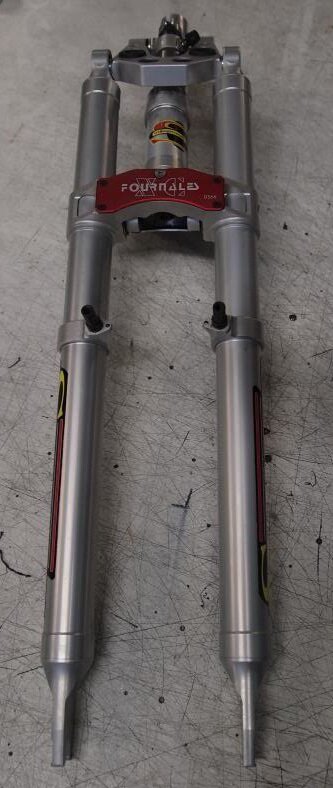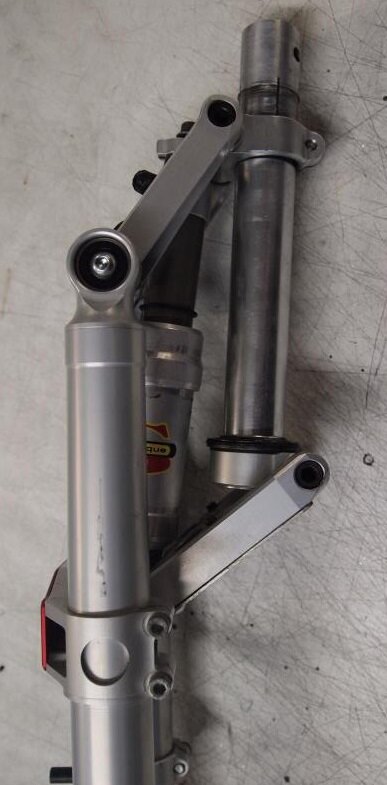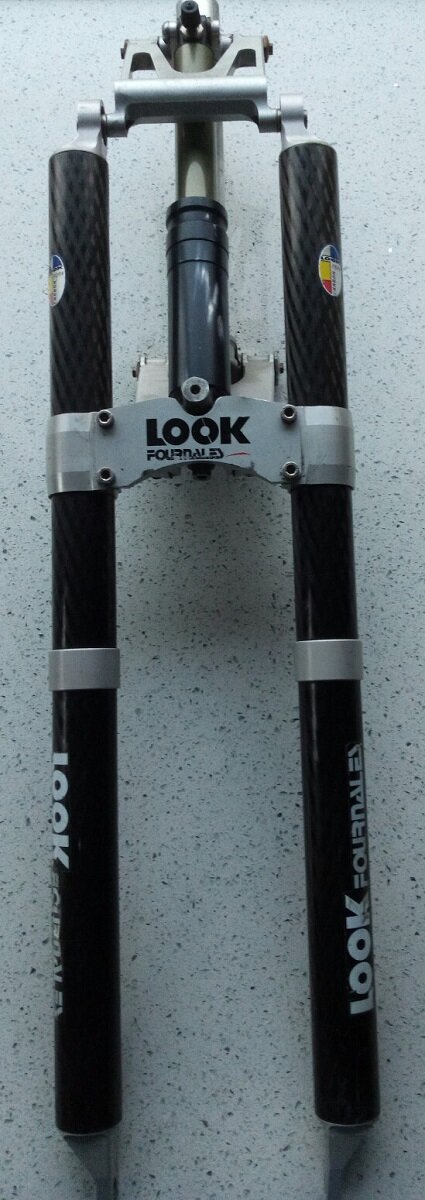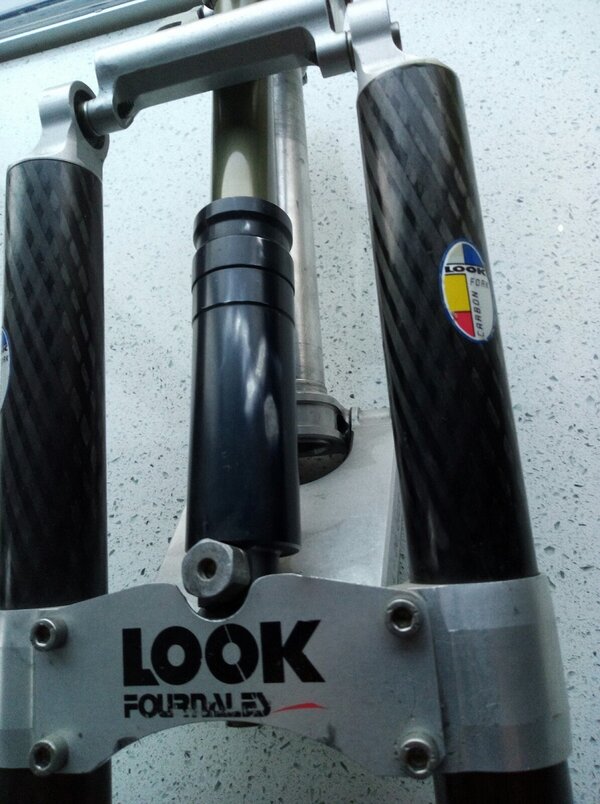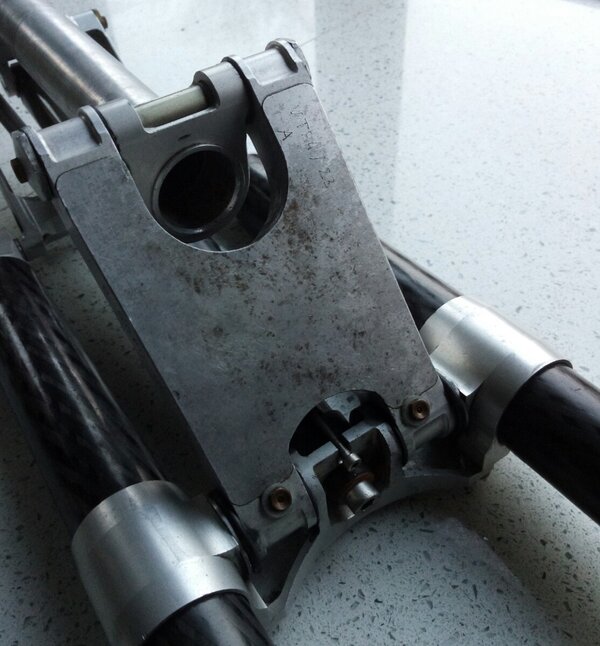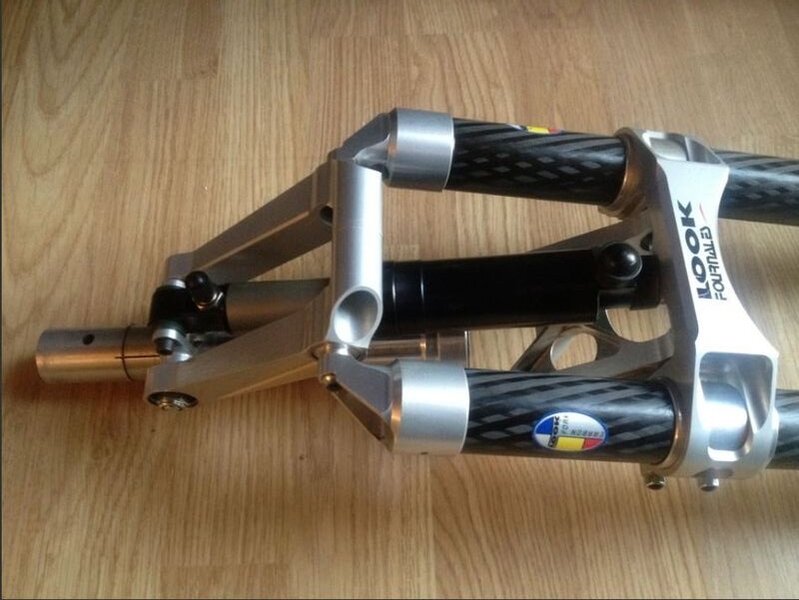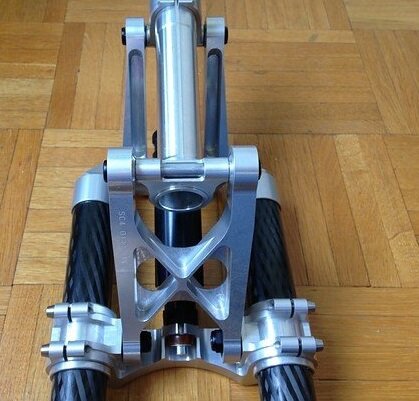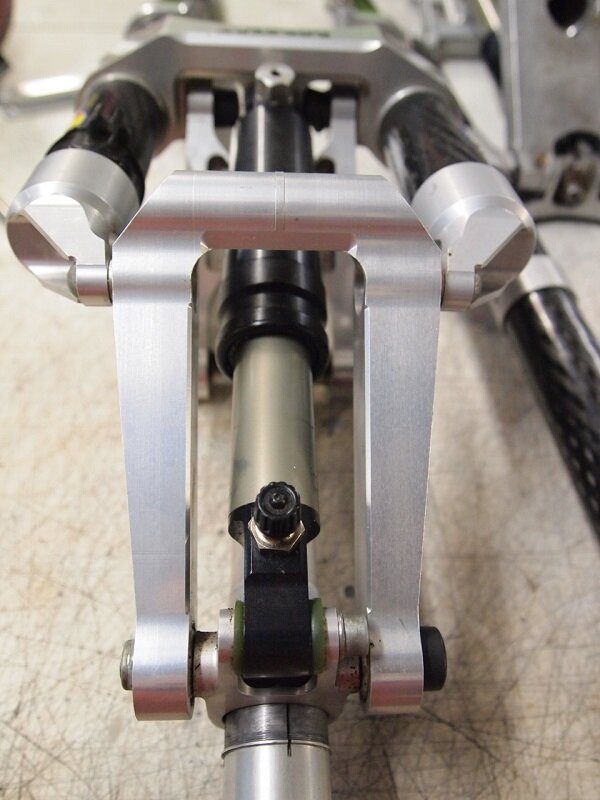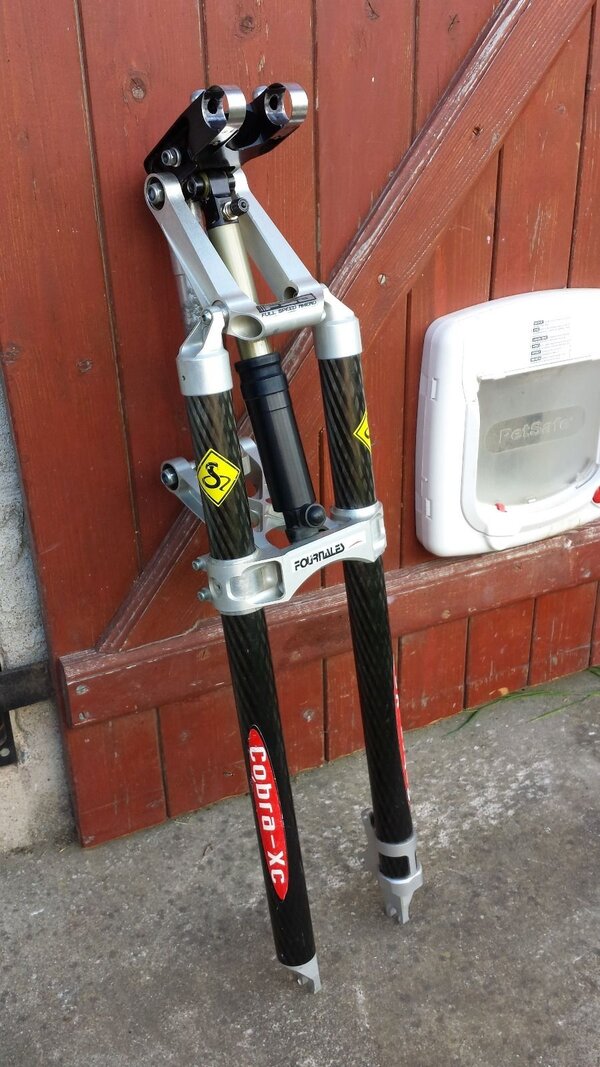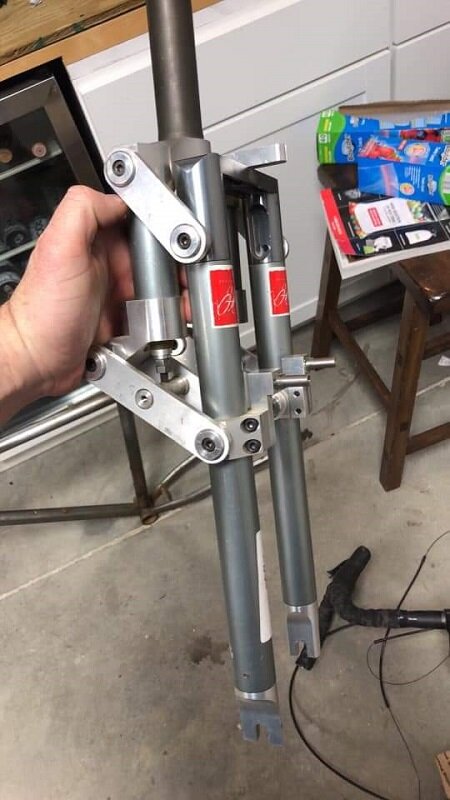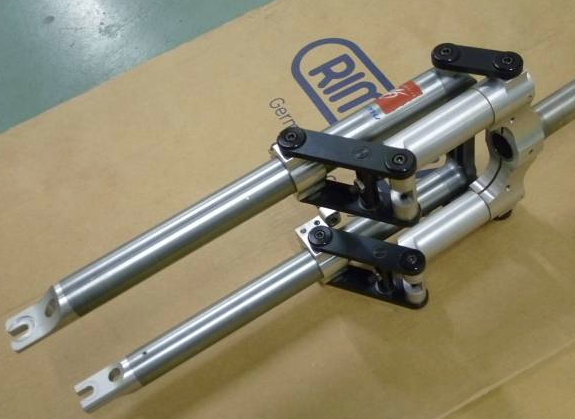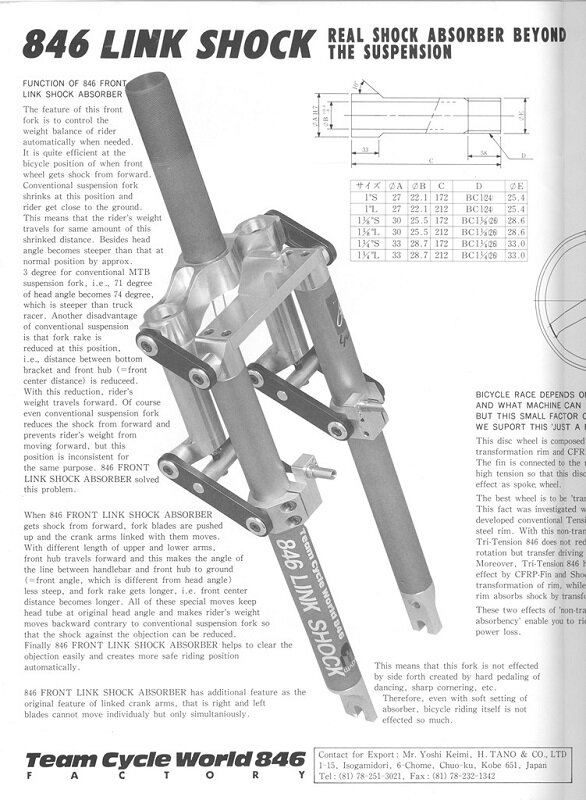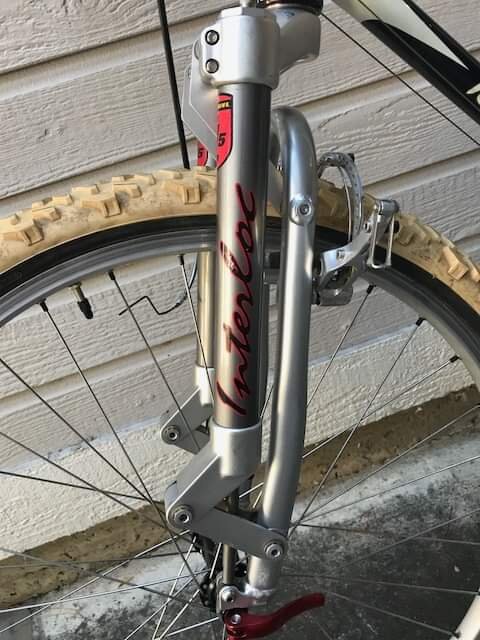2manyoranges
Old School Grand Master
- Feedback
- View
The post in ebay alert about the USE SuB got me thinking...why don’t we see them out on the trail, and what does this history of linkage forks in mtb look like...
Of course, linkage forks have a long history in motorcycling, with many different variations over the decades. They make sense, since you can control the axle path, increasing small bump sensitivity and anti-dive. This enables them to do things which simple telescopic forks cannot, but of course the progression in design of modern telescopic forks has been amazing, with huge performance increases in the last ten years, with more coming all the time.
In MTB, this appeared a little while ago: https://off.road.cc/content/news/first-ride-motions-e18-anti-dive-linkage-fork-2654...
And going back, we had:
The Lawwill Leader fork - late 1980s
I had no experience of that - but note that this is a simple up and down path design.
The AMP F1 - 1990s
Very light - brilliant design but underengineered in places. A very good fork with a designed path; but somewhat marred by terrifying flexibility of the tube-section legs...oh see them bend beneath you under braking...but great performance otherwise.
Girvin fork - 1990s
An excellent fork with a designed J path; very small bump sensitive even with elastomer springs. No flex, and very dependable - light, so you could build a sub-25 Proflex with ease.
USE SuB fork - early 2000s
Boutique genuine linkage fork - unlike non-linkage Cannondale Lefty - beautifully engineered and carefully-designed path to prevent diving under braking. But note that braking is not something which DH’ers and Enduro riders now do...so it’s not clear that the anti-dive is a primary design consideration.
Ride Motion E18 - contemporary
Weird looking Terminator thing - but the review is interesting....
https://off.road.cc/content/news/first-ride-motions-e18-anti-dive-linkage-fork-2654
Of course, linkage forks have a long history in motorcycling, with many different variations over the decades. They make sense, since you can control the axle path, increasing small bump sensitivity and anti-dive. This enables them to do things which simple telescopic forks cannot, but of course the progression in design of modern telescopic forks has been amazing, with huge performance increases in the last ten years, with more coming all the time.
In MTB, this appeared a little while ago: https://off.road.cc/content/news/first-ride-motions-e18-anti-dive-linkage-fork-2654...
And going back, we had:
The Lawwill Leader fork - late 1980s
I had no experience of that - but note that this is a simple up and down path design.
The AMP F1 - 1990s
Very light - brilliant design but underengineered in places. A very good fork with a designed path; but somewhat marred by terrifying flexibility of the tube-section legs...oh see them bend beneath you under braking...but great performance otherwise.
Girvin fork - 1990s
An excellent fork with a designed J path; very small bump sensitive even with elastomer springs. No flex, and very dependable - light, so you could build a sub-25 Proflex with ease.
USE SuB fork - early 2000s
Boutique genuine linkage fork - unlike non-linkage Cannondale Lefty - beautifully engineered and carefully-designed path to prevent diving under braking. But note that braking is not something which DH’ers and Enduro riders now do...so it’s not clear that the anti-dive is a primary design consideration.
Ride Motion E18 - contemporary
Weird looking Terminator thing - but the review is interesting....
https://off.road.cc/content/news/first-ride-motions-e18-anti-dive-linkage-fork-2654
